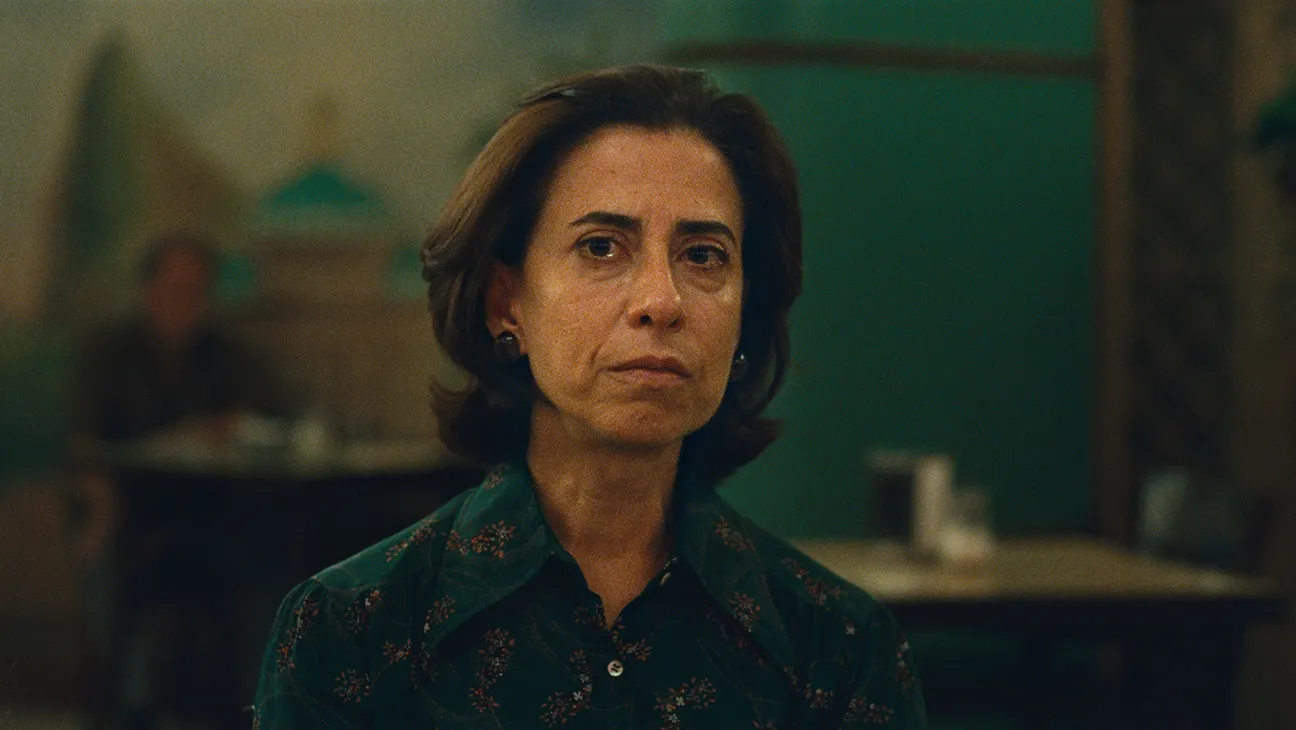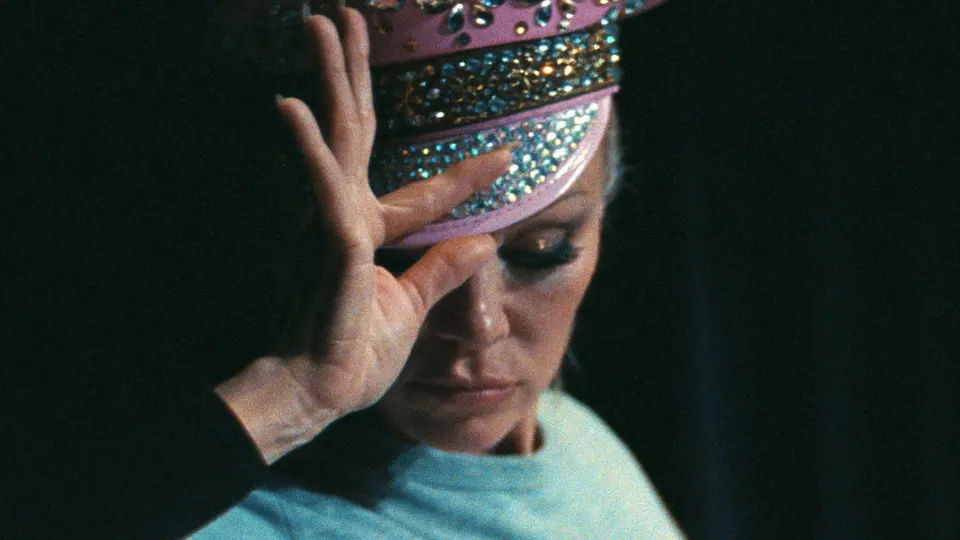The Woman's Picture: A History of Hagsploitation
- Eve O'Dea
- Feb 22
- 6 min read
Keyboards were set aflame after Valerie Monroe, a contributor at the beauty magazine Allure, penned an article titled "Old Lady Energy Flexed Its Well-Toned Muscles at the Golden Globes". I, like many other readers, stopped in my tracks. "Old Lady?" I thought, "how rude". Anyway, as far as I'm concerned "old" starts at the ripe age of 80. In her defence, Monroe, who herself is 74, claims that it's high time "old" lose its status as an insult and transform instead into a badge of honour. For what it's worth, Monroe is right, this year has in fact offered notably substantial roles for some of our greatest middle-aged actresses, from Marianne Jean-Baptiste's lauded performance in Hard Truths, to Pamela Anderson's sequined turn The Last Showgirl, to Angelina Jolie as La Divina herself in Maria. Filmmakers, finally, are coming to terms with a sizeable gap in the representation of an entire demographic that Hollywood has historically shunned and ridiculed.
The rejection of middle-aged women in American cinema goes back as far as the beginning of the industry itself. As young bright actresses of the early decades of Hollywood got older, their star-power faded and their careers dwindled. Older actress typically found themselves delegated to supporting, matron-like roles, if they were so lucky (leading lady Marie Dressler being an exception). Such a devastating downfall is depicted in the mid-century masterpiece Sunset Boulevard (1950), where a woman's "advanced" age and subsequent mistreatment by the film industry contributes to her deteriorating mental state and gives way to acts of irrational mayhem. Sunset Boulevard's theatre-set sister-film All About Eve (1950) similarly depicts an honoured but "aging" actress under threat of a new, younger talent. Just a year later, Vivien Leigh, in one of her most iconic performances, eats up the scenery in A Streetcar Named Desire (1951) as the mentally unstable Blanche Dubois, a Southern Belle who has grown fearful of the world and self-consciousness about her age and appearance. These films, containing three of the most lauded performances by actresses in the history of cinema, were anomalies when it came to paying particular attention to older women with a degree of nuance and desirability. While dabbling in camp sensibilities and relishing in the overdramatic, these three films were understated in comparison to what was to come in the following decades with the arrival of a new subgenre.
Like other exploitation film genres, hagspoitation came about as the film industry become more democratized, as the tightly-controlled studio system lost its grip on production and self-imposed censorship became a thing of the past. Experimental filmmakers who once had to deal in the suggestive and implicit, could now engage in the lurid and perverse. Actresses, who were once beholden to uphold a sort of respectability onscreen and off, could take roles once forbidden to them, especially those who needed it most. Thus, older actresses whose stardom had dried up since their glory days of youth could return to the screen as vindictive, sex-starved, maniacs. But the Hag does not forget what she once had; she clings desperately to her former, younger self. She wears too much makeup, overdresses for every occasion, and doesn't know when to keep her mouth shut. She is the cause of her own destruction, and is prepared to take everyone else down with her.

Whatever Happened to Baby Jane? (1962), the mother of all hagsploitation, is a circus of a movie, starring a pair of actresses whose careers began in the silent era but by their 50's no longer had the luxury of choice when it came to picking roles. The always fearless Bette Davis plays Jane, a delusional former child star who still wears her hair in blonde ringlets, dresses as a babydoll, and paints her face like a French mime. She cackles and creeps through her home as she cares for her wheelchair-dependant sister, Blanche (another one!) played by the dressed-down grande dame of haggery, Joan Crawford. The women bite and scratch their way through this torturous two-hander, leaving behind a plethora of one-liners for drag artists to add to their arsenal of insults. Davis' career would continue to sit somewhere between respectable and sensational, while Crawford was unable to climb her way out of the hagsploitation subgenre (re: her final film in which she plays an anthropologist who comes to care for a resurrected troglodyte). Crawford, like many of her contemporaries, found second life as a B-movie stalwart in the later decades of her life, giving her exposure to younger audiences but significantly diminishing her once-held status as a glamorous diva of the studio lot. Sure, people still knew who she was, and some of her movies did well financially, but people no longer envied her beauty or charm, they were laughing at her simply for being a woman over fifty who dared to show herself onscreen.

Hagsploitation reached its zenith with Mommie Dearest (1981), the camp-tastic biopic of Crawford inspired by accounts of abuse from her daughter Christina. Starring Faye Dunaway as the absolutely batshit crazy Crawford, the film is all the more legendary as it was intended to be a serious, grounded drama that was sure to earn Dunaway her second Oscar. Instead, the film was lambasted by critics and devoured by gays, who adopted this icon of bad taste into their coterie of cultural references. Now, not only could drag impersonators take to the stage as Joan Crawford, they could do impressions of Faye Dunaway as Joan Crawford, painting her exaggerated features on a white mask while shrieking about wire hangers.
When it comes to the continued legacy of hagsploitation, the importance of the relationship between gay men and iconic Hollywood actresses cannot be overstated. This is a relationship that has flourished since the very creation of the starlet, when closeted, socially repressed gay men were given an outlet to vicariously view themselves on screen as tragically misunderstood, yet desirable objects of male affection. This symbiosis manifested itself into the adoption of actresses and their characters as mascots of gay culture, and utilizing their onscreen dialogue as beacons of under-the-radar self-identification. What better way to determine if another man was like yourself than to ask if he was a "friend of Dorothy"? or to create a sense of belonging and community than to share a laugh over Bette Davis' delivery of "But you ARE Blanche! You ARE in the chair!"

While proper hagsploitation was left behind in the twentieth century, many themes attributable to the subgenre have continued to work its way into modern cinema. In only the past few years, for example, there has been a notable number of films depicting relationships between older women and younger men, to varying degrees of legality (e.g. Good Luck to You, Leo Grande (2022), The Idea of You (2024), May December (2023)). This theme is not exclusive to hagsploitation, as it was once sensitively, non-exploitatively depicted in the melodramas of Douglas Sirk and Vincent Minnelli. But many of these films portray this relationship in tandem with the woman coming to terms with her "advanced" age, making the decision to actively step outside of the societal expectations placed upon her. As with hagsploitation, the woman is trying to convince herself, and sometimes others, of her youth by way of presenting herself as desirable to the younger man. Halina Reijn's Babygirl (2024) is a classic case, where an overstressed and undersexed woman gains a new lease on life upon entering an illicit affair with one of her company interns. Babygirl, while not classically hagsploitative in its aesthetic, dips its toe into the subgenre by drawing attention to the age and appearance of its lady protagonist, especially in comparison to her younger paramour. But her desire to relish in her youth is not attainable, and ultimately leads to the collapse of her carefully curated professional and personal life, as is the fate of the Hag. At once, these films are both a product and a deconstruction of the current culture's real life fear of female aging that has begun to affect women at an increasingly younger age (re: skincare for "pre-mature aging").

Such societal fear and its affect on one's self-image has never been so explicitly explored than in The Substance (2024). Coralie Forgeat's body horror symposium boils down hagsploitation to its very essence without distraction, demonstrating the asinine expectations we place upon women and the self-destructive efforts taken to meet said expectations. A woman, rejected by the industry which once embraced her in youth, grows to loathe her aging body so deeply that she figuratively and literally tears herself in two. Her physical transformation later in the film calls to mind a number of horror films, both recent and historic, which have presented the aged female body as the ultimate source of repulsion (e.g.: X (2022), The Shining (1980), Barbarian (1922)). The Substance puts a whole century of film's depiction of women under a microscope and shows us things we'd rather not see. It's blood, it's sagging skin, it's body hair and blisters. It's all the things we find abhorrent about women's bodies delivered to us in spandex and red lipstick. I wouldn't be surprised, with the success and impact of this cultural juggernaut, if the Hag, in all her glory, were soon to return to our screens with a vengeance. This time, she will not be dangled in front of us as a punching bag, but will be lovingly taken into the arms of female writers and directors and presented sympathetically with even more stretch marks, hot flashes, and a healthy dose of hysteria.











コメント